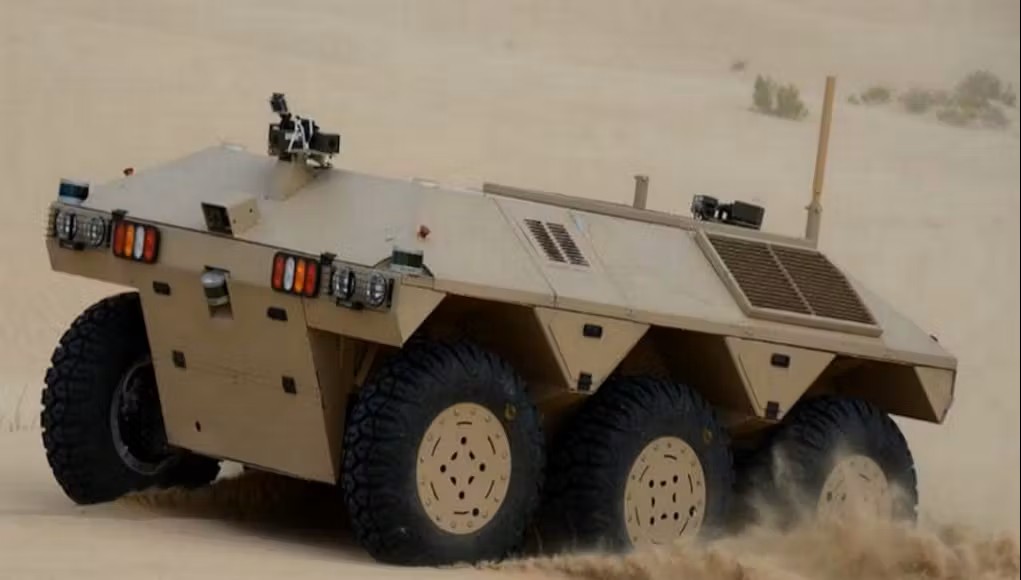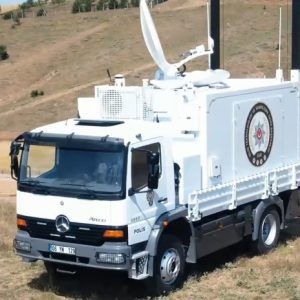
Britain is moving fast on autonomy. The Ministry of Defence plans to field UK AI drone swarms and unmanned ground vehicles at scale within five years [1]. This shift is anchored in the Strategic Defence Review (SDR) 2025 and recent answers by Defence Minister Luke Pollard. Together, they place AI, autonomy, and a shared digital backbone at the centre of force design [2] [3].
Key Facts
Timeline: High numbers of uncrewed air and ground systems within five years, aligned with SDR 2025 [4].
Design Logic: A high–low mix: fifth/sixth‑generation crewed aircraft teamed with numerous attritable drones to expand mass and reach [5].
Digital Foundation: Data standards, AI services, synthetic environments, and secure networks that link people and platforms [3].
Operational Driver: Lessons from Ukraine: 24/7 ISR, rapid strike, and the cost‑exchange advantage of AI‑enabled drones [6].
From Concept to Design: What the High–Low Mix Changes
The SDR stresses mass, speed, and persistence. Pairing exquisite crewed aircraft with plentiful autonomous systems widens sensing geometry and adds magazine depth. It also lowers risk to crews and unit cost per effect [7]. In practice, UK AI drone swarms networked with Typhoon and F‑35—then GCAP—can prosecute time‑sensitive targets faster and saturate defences with distributed salvos.
On land, UGVs take hazardous jobs: last‑mile resupply, route clearance, and remote sensor placement. At sea, unmanned surface and subsurface craft extend anti‑submarine and mine‑countermeasure envelopes. In the air, collaborative ISR and strike drones keep target custody without human fatigue [1] [6]. As a result, commanders gain tempo and choice.
Digital Backbone: Data, AI, and Synthetic Environments
The core enabler is a common digital foundation. Interoperable data, edge AI, and realistic synthetic environments allow rapid test–train–iterate cycles. Crucially, mission data pipelines must ingest multispectral feeds, fuse them, and push decision‑quality products to controllers in seconds. Therefore, a hardened kill chain and electromagnetic manoeuvre framework become essential [8].
“Uncrewed and autonomous systems will be incorporated into the Integrated Force in high numbers.”Ministerial written answer aligned with SDR 2025 priorities [2].
Cost‑Exchange and Resilience: Why Mass Matters
Ukraine shows a harsh arithmetic. Cheap, attritable drones impose high costs on traditional defences and supply lines. For the UK, resilience requires quantity as well as quality. A swarmable inventory—paired with rapid software updates and domestic manufacture—helps absorb attrition and sustain tempo. Meanwhile, directed‑energy and soft‑kill options blunt threats, yet they do not reduce the need to generate affordable mass [6].
Procurement Reality: Risks, Milestones, and Watch‑Items
Ambition must meet schedule discipline. The five‑year window demands spiral development, open architectures, and modular bays for ISR, EW, and loitering‑munition payloads. Initially, expect niche roles—perimeter ISR, EW decoys, and logistics—before wider brigade or air‑wing integration. Key signals include a visible autonomy budget line, robust data links under jamming, and certified safety cases for teaming with crewed aircraft [3] [9].
Industrial Base and Standards
Rapid scaling will stretch the UK supply chain for airframes, propulsion, batteries, optics, and RF parts. Defence Digital’s push for open mission systems and common control standards will be decisive. If executed well, UK AI drone swarms can enable a partner model: primes and SMEs co‑develop mission software while the MoD curates a hardened DevSecOps pipeline. Consequently, procurement reform moves from optional to required [8] [10].
Implications for NATO and Allies
The UK’s path mirrors allied trends in manned–unmanned teaming and software‑centric warfare. Within NATO, the ability to surge attritable mass and share targeting data through federated networks will lift combined fires and maritime security. For industry, export‑ready subsystems—navigation, EW payloads, and secure links—offer opportunities, provided they meet export control and interoperability rules [7].
Internal link: For related coverage of autonomy and procurement pacing from DSEI, see our roundup here.
Conclusion
The five‑year plan to field UK AI drone swarms is a design bet on speed, software, and scalable mass. Success now depends on three things: a hardened digital backbone, safe teaming with crewed aircraft, and industrialised autonomy at a price that survives attrition. If these hold, drones and UGVs will no longer sit at the edge of the order of battle. Instead, they will become the connective tissue of the Integrated Force.
Further Reading
References
- UK Defence Journal — “UK to field swarm of AI drones within five years,” 16 Sep 2025: https://ukdefencejournal.org.uk/uk-to-field-swarm-of-ai-drones-within-five-years/
- UK Parliament Written Questions (UAS) — UIN 72527: https://questions-statements.parliament.uk/written-questions/detail/2025-08-29/72527
- UK Government — Strategic Defence Review 2025 (policy page): https://www.gov.uk/government/publications/the-strategic-defence-review-2025-making-britain-safer-secure-at-home-strong-abroad/the-strategic-defence-review-2025-making-britain-safer-secure-at-home-strong-abroad
- Parallel Parliament — Uncrewed Systems: Engineering (Answered 15 Sep 2025): https://www.parallelparliament.co.uk/question/74218/uncrewed-systems-engineering
- UK Government — SDR 2025 two‑pager (PDF): https://assets.publishing.service.gov.uk/media/683dbe63d23a62e5d32680de/The_Strategic_Defence_Review_2025_-_two-pager.pdf
- House of Commons Library — “Use of drones in defence” (CDP‑2025‑0176): https://researchbriefings.files.parliament.uk/documents/CDP-2025-0176/CDP-2025-0176.pdf
- IISS — “SDR 2025: UK outlines ambitious vision for defence”: https://www.iiss.org/online-analysis/military-balance/2025/062/sdr-2025-uk-outlines-ambitious-vision-for-defence-amid-fiscal-challenges/
- Financial Times — “High‑tech warfare ops to be unified in defence shake‑up”: https://www.ft.com/content/5a3abd52-3b26-44b7-ab94-7a76fbb485a6
- The Guardian — “AI to play increasing role in UK armed forces, defence secretary says”: https://www.theguardian.com/politics/2025/may/20/uk-armed-forces-artificial-intelligence-ai-strategic-defence-review-john-healey
- The Times — “What is in the UK defence review? What you need to know”: https://www.thetimes.co.uk/article/strategic-defence-review-2025-vw9h6gzfx











